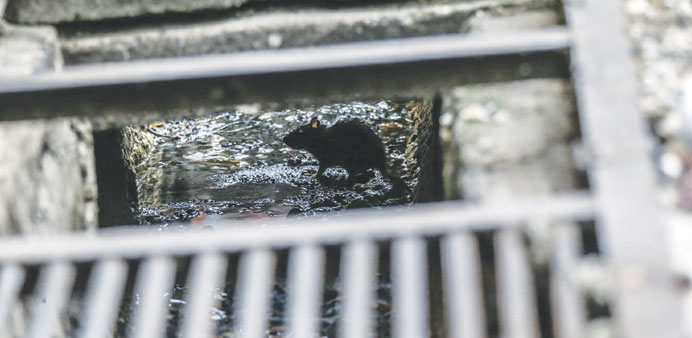|
|
When Rajit entered the house in a Kuala Lumpur suburb, he immediately noticed the familiar stench of an unwanted pest.
As he scanned the room for his prey, he saw huddled on the sofa at one end of the living room an anxious teenage girl, while her mother stood guard at the closed kitchen door.
“The girl was the one who saw the huge intruder fall from the ceiling,” said Rajit, a 51-year-old Indian migrant worker. “She was clearly horrified by the experience.”
Rajit came to Kuala Lumpur five years ago to work in a restaurant and moonlights as a rat catcher on his day off.
He opened the kitchen door, and saw the beast wriggling and hissing inside a steel cage, a trap set by a neighbour. The rat’s hairy body was about 25cm long with a tail of about 15cm. It had reddish skin eruptions.
“I immediately asked for boiling water and poured it over the rat to kill it,” he said, recalling one of his biggest catches.
Within a couple of minutes, the mother and daughter’s almost seven-hour terror was over.
Rajit, who services between 10 and 15 houses on a typical rat catching day, said he prefers to use his own rat poison to get rid of the pests.
“I find it less dangerous compared to catching them with traps and then killing them,” he said. “But sometimes the poison would not work or would take too long to take effect especially if it’s a big-bodied rat. In such cases, I use steel rat traps and boiling water to finish the job.”
But while rat horror stories have become a staple on Malaysian social media sites, the vermin pose a more serious threat than giving people a fright and gnawing furniture.
The bubonic plague, which was spread largely by rats, killed an estimated 25mn people in mediaeval Europe. While the “Black Death” may be a thing of the past, other rat-borne diseases such as haemorrhagic fever and rat-bite fever still affect people throughout the world.
Malaysia’s newly appointed Urban Wellbeing, Housing and Local Government Minister Abdul Rahman Dahlan vowed to address the menace with a nationwide rat control campaign to be launched today.
Rahman said that the campaign would include rat extermination activities as well as educating people on the importance of keeping their surroundings clean to deprive rats of their breeding grounds.
“Rats breed very fast because of a dirty environment,” he said. “Our campaign is aimed at creating awareness among the public to maintain a high level of cleanliness.”
Rahman’s rat-control campaign was triggered by warnings from health officials about a spike in cases of rat-borne leptospirosis.
Leptospirosis is an infectious disease caused by bacteria found in rat urine. People contract the disease when they wade through contaminated floodwater. The bacteria enter through wounds and other skin openings.
Symptoms include high fever, body pain and redness of the eyes. If left untreated, the disease can harm the body’s vital organs and can be fatal.
Data from the health ministry’s disease control division showed leptospirosis cases have jumped by 85% in the past two years, reaching 3,665 cases in 2012.
And this level looks set to continue, with 2,262 cases of leptospirosis recorded so far in 2013, including 22 deaths.
One of the latest fatalities due to leptospirosis was a member of staff at the University of Malaysia Terengganu in northern Malaysia, who died on June 8. The health department confirmed that his blood tested positive for the rat-borne bacteria.
Mohamed Idris, president of the advocacy group the Consumer Association of Penang, said addressing the rat problem requires more than seasonal or sporadic clean-up campaigns.
“Massive rat hunts and gassing are undertaken by some local authorities in Malaysia, but this is not solving the problem,” he complained.
“Rats will thrive wherever food is available – especially discarded food,” he said, adding some advice for anyone hoping to avoid having to confront a rat in their own home: “To keep the rat population in check we must ensure cleanliness and not dump food waste indiscriminately.”

